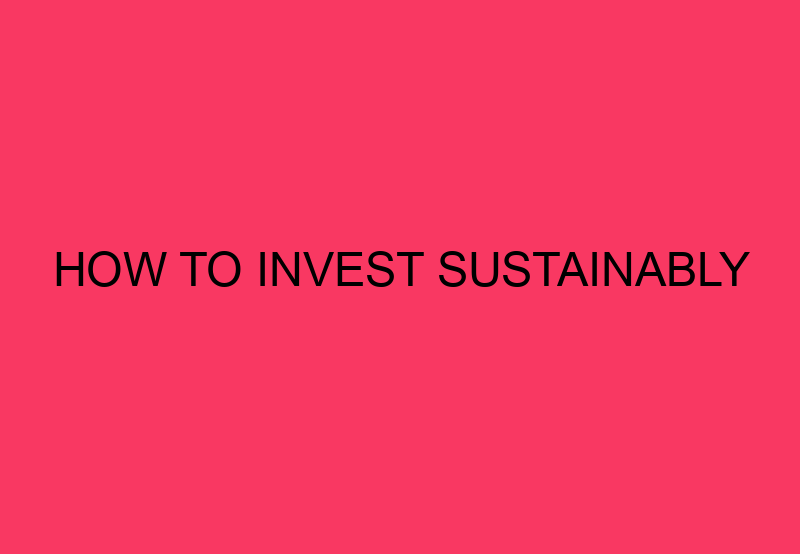Investing sustainably has become more popular in recent years, as investors look for ways to generate returns while also making a positive impact on the world. Sustainable investing involves making investment decisions that consider environmental, social, and governance (ESG) factors, in addition to financial performance. If you are interested in investing sustainably, here are some steps you can take to get started.
Step 1: Understand Sustainable Investing
Before you begin investing sustainably, it is important to understand what it is and how it works. Sustainable investing involves integrating ESG factors into investment decisions in order to generate long-term value. This can include investing in companies that have a positive impact on the environment or society, or avoiding companies that have a negative impact.
There are several different types of sustainable investing strategies, including:
- Socially Responsible Investing (SRI)
- Environmental, Social, and Governance (ESG) Investing
- Impact Investing
- Green Investing
Each of these strategies has its own focus and approach, so it is important to understand them before you start investing.
Step 2: Determine Your Goals
Once you understand sustainable investing, you need to determine your goals. These will depend on your individual values and priorities. For example, you may be interested in investing in companies that promote clean energy, or you may want to invest in companies that have a positive impact on the communities where they operate.
It’s important to be clear about your goals so that you can choose the right investments to meet them.
Step 3: Do Your Research
Before you invest in any companies or funds, it’s important to do your research. Look for information on a company’s ESG performance, including factors such as:
- Environmental impact
- Corporate governance
- Social responsibility
There are several resources you can use to research ESG performance, including:
- ESG ratings agencies, such as MSCI, Sustainalytics, and FTSE Russell
- Investment research platforms, such as Morningstar and Bloomberg
- Company sustainability reports and disclosures
Step 4: Choose Your Investments
Once you have done your research, it’s time to choose your investments. This will depend on your goals and the types of companies or funds that align with them.
There are several different types of sustainable investments you can consider, including:
- Sustainable mutual funds and exchange-traded funds (ETFs)
- Individual companies that have a strong ESG performance
- Green bonds and impact investments
Look for investments that align with your goals and have a strong track record of ESG performance.
Step 5: Monitor Your Investments
Investing sustainably is an ongoing process, so it’s important to monitor your investments over time. Keep track of how your investments are performing financially, as well as how they are impacting the environment and society.
You may also need to adjust your investments over time if your goals or priorities change.
Conclusion
Investing sustainably is a great way to generate returns while also making a positive impact on the world. By following these steps, you can get started on the path to sustainable investing and help create a better future for the planet and society.
Semantic Keywords: sustainable investing, ESG factors, investment decisions, financial performance, social responsibility, corporate governance, mutual funds, exchange-traded funds, green bonds.
